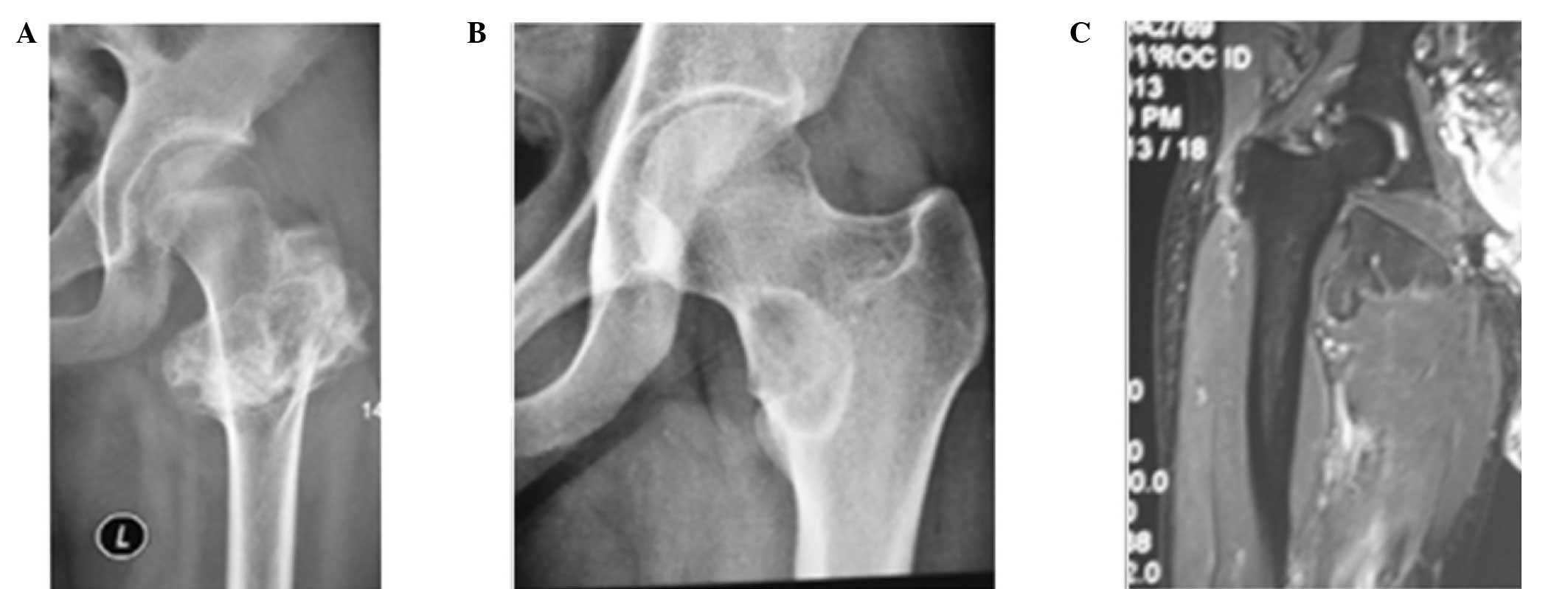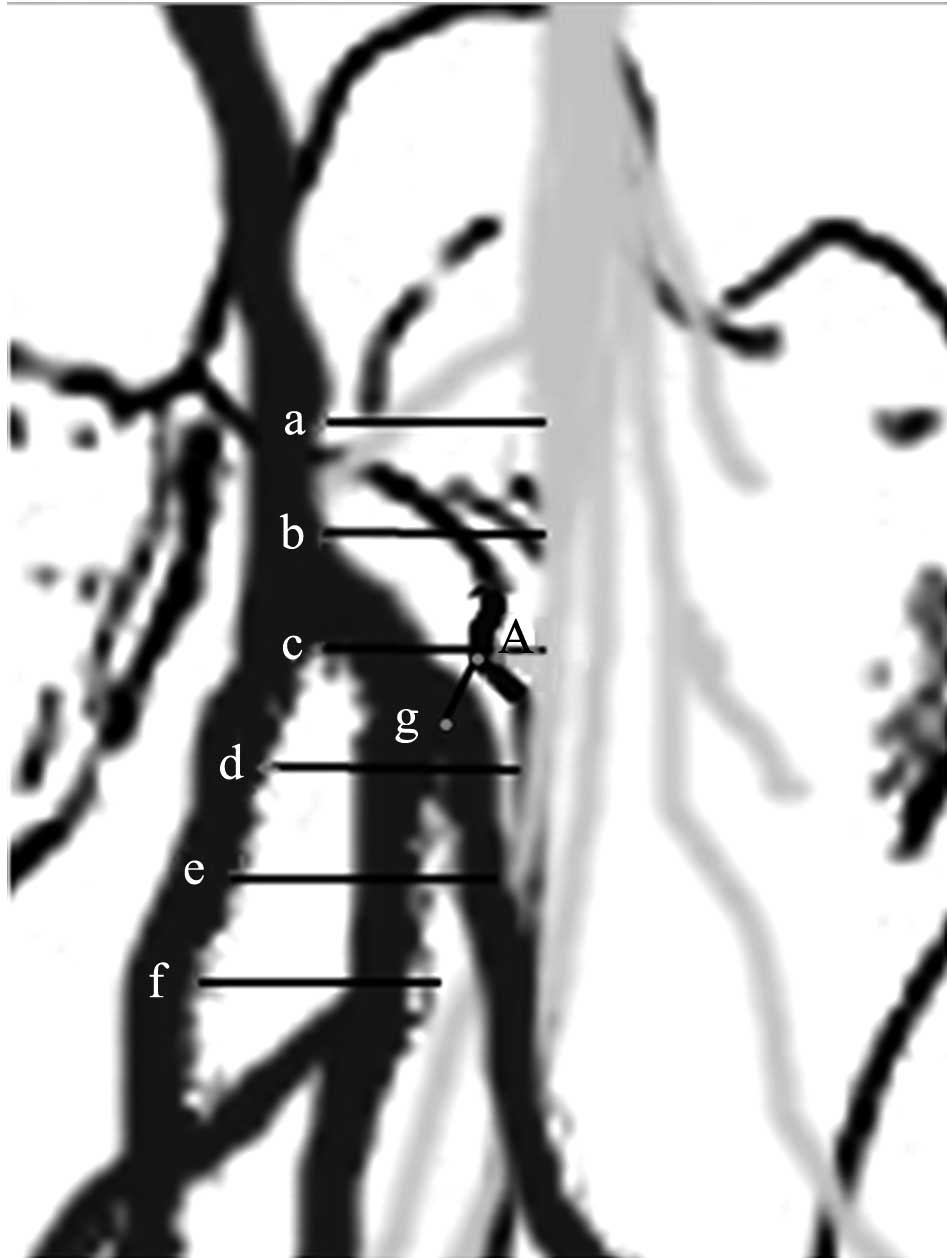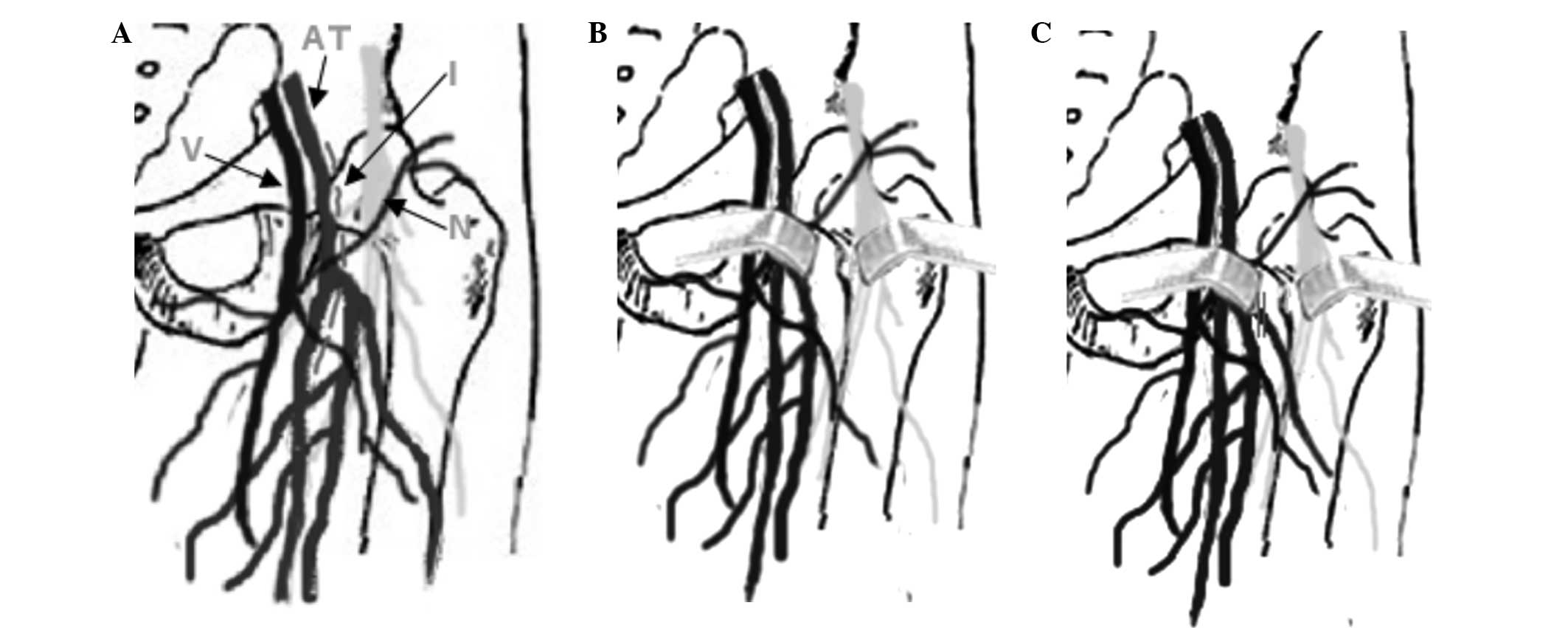A novel surgical approach for the treatment of tumors in the lesser trochanter
- Authors:
- Published online on: April 27, 2015 https://doi.org/10.3892/etm.2015.2453
- Pages: 201-206
Metrics: Total
Views: 0 (Spandidos Publications: | PMC Statistics: )
Total PDF Downloads: 0 (Spandidos Publications: | PMC Statistics: )
Abstract
The proximal femur is a common location for the development of primary benign bone tumors. However, there is currently no surgical technique designed specifically for treating tumors located in the lesser trochanter. In the present study, a novel procedure was developed for directly exposing the lesser trochanter for surgical intervention. This technique may be particularly suited to treating tumors that extend toward the lateral and anterior forward of the lesser trochanter. The new approach involved passing through the femoral triangle, separating the femoral nerve and femoral vessels (artery and vein) and resecting the tumor between the iliopsoas and pectineal muscles. The procedure was performed on six patients with various types of tumor, including one case with osteoid osteoma, one case with non‑osteogenic fibroma, one case with osteoma, one case with liposarcoma and two cases of osteochondroma. The preliminary results indicated that the surgical durations were short (60‑100 min), blood loss was minimal (30‑200 ml) and that pain relief was achieved following surgery. Only one patient continued to experience mild pain, scoring 18 mm on a visual analog scale. The other patients were fully relieved of pain. Sensory dysfunction was experienced by one patient following surgery, with persistent numbness and paresthesias in the distribution of the femoral nerve. No cases of deep vein thrombosis, femur head necrosis, hip joint degeneration disease or local recurrence were identified in any patients during the follow‑up period. In order to clarify the virtual tissue, such vessels, nerves and the available space in our approach area, we collected 20 cadaveric specimens and performed anatomical examinations in and around the formal triangle. The spaces between the femoral artery and femoral nerve were measured and analyzed, with the results demonstrating that a definite space existed. Therefore, the novel approach presented in the study may be useful in the resection of benign tumors and the preoperative palliative resection of malignant tumors. The technique may be particularly suited to tumors extending toward the lateral and anterior of the lesser trochanter.












